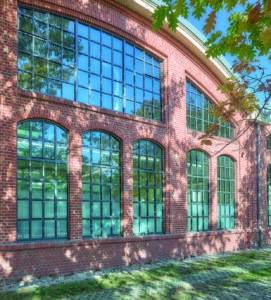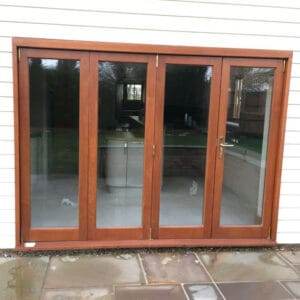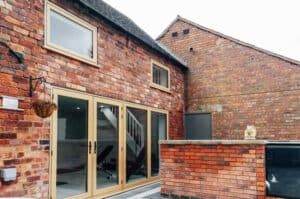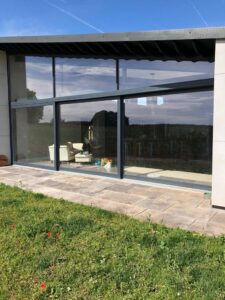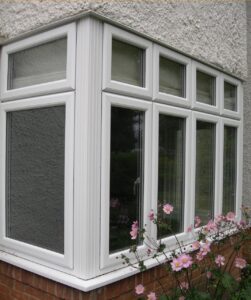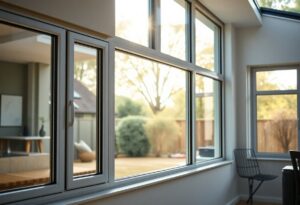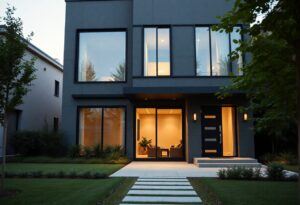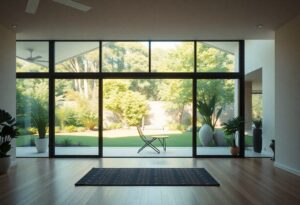Just as you seek to enhance the comfort and aesthetic appeal of your space, understanding the balance between light transmission and insulation in R2 glazing becomes pivotal. By optimising these elements, you can significantly improve your home’s energy efficiency while maintaining the clarity that allows natural light to flood in. This post will guide you through the science behind R2 glazing, highlighting how you can achieve an ideal blend of visual comfort and thermal insulation for a more sustainable living environment.
Understanding R2 Glazing
For optimal performance in modern buildings, you must consider R2 glazing. This innovative fenestration solution combines energy efficiency with enhanced aesthetic appeal, providing a perfect balance between light transmission and thermal insulation. As energy demands rise, understanding R2 glazing’s role in your construction or renovation projects is crucial to achieving your sustainability goals.
Definition and Composition
Before delving into its advantages, it’s important to understand that R2 glazing features dual glazing technology, which incorporates two glass panes separated by a gas-filled space. This design significantly improves thermal insulation while allowing for ample natural light to enter your space.
Benefits of R2 Glazing
Beside its energy efficiency, R2 glazing offers numerous benefits, including enhanced sound insulation and reduced condensation. The dual-pane system creates a barrier against external noise, providing you with a peaceful indoor environment, while its thermal performance contributes to lower energy bills.
Further, R2 glazing can also increase your property’s value by enhancing its overall appeal and functionality. With the ability to maintain internal temperatures better than single glazing, you will notice significant savings on heating and cooling costs. Additionally, the improved sound insulation benefits create a more comfortable living space, making it an excellent investment for long-term satisfaction. By integrating R2 glazing into your environment, you take a step towards a more energy-efficient, aesthetically pleasing, and ultimately more valuable property.
The Science of Light Transmission
If you seek to understand light transmission in R2 glazing, it’s imperative to grasp how light interacts with various materials. Light transmission is dictated by a blend of physical properties, including the refractive index and surface coatings, which can greatly affect both illumination and thermal performance. By understanding this science, you can make informed decisions regarding your glazing options.
Factors Affecting Light Transmission
With your quest for optimal light transmission, several factors play a vital role. These include:
- Material composition
- Surface treatments
- Thickness of glass
- Angle of incidence
This interplay of factors influences the balance between clarity and insulation in your glazing solution.
Measuring Clarity and Transparency
Science in the field of glazing provides specific metrics to assess clarity and transparency. Optical clarity is quantified using techniques such as transmittance measurements, while transparency can be evaluated through light scattering analysis. These methods allow you to evaluate how well a material lets light pass through and how much is distorted, enhancing your understanding of its practical applications.
A thorough assessment of clarity and transparency is key in your project’s success. For instance, materials with high transmittance ratings deliver a clear view while maintaining energy efficiency. Meanwhile, excessive scattering can lead to light loss, which may compromise your design’s effectiveness. Understanding these elements ensures you achieve an optimal balance in your glazing choices.
Insulation Performance
Now, when considering the insulation performance of R2 glazing, it’s important to achieve a balance between clarity and thermal retention. The innovation of modern glazing systems enables significant improvements in thermal insulation while maintaining transparency. For further insights, check out this article on Collaborative Optimized Design of Glazing Parameters and…
Thermal Efficiency and Energy Savings
Above all, R2 glazing is designed to enhance thermal efficiency, significantly reducing your energy consumption. This innovative glazing solution effectively traps heat during winter months and reflects it in the summer, leading to lower heating and cooling costs in your home or building.
Sound Insulation Properties
The insulation capabilities of R2 glazing also extend to sound attenuation. This means that you can enjoy a quieter indoor environment, shielding your living or work spaces from external noise pollution.
Indeed, R2 glazing not only enhances thermal performance but also offers impressive sound insulation properties. Its multi-layer design effectively blocks noise, providing you with a peaceful atmosphere free from unwanted disturbances. This dual functionality means that you can enjoy the benefits of energy efficiency without compromising on your comfort. The ability to significantly reduce sound transmission makes it an attractive option for urban dwellers, ensuring your home remains a sanctuary amidst the hustle and bustle.

Striking the Balance
Many homeowners and builders face the challenge of optimising light transmission while ensuring adequate insulation. Achieving this balance is important to create comfortable living spaces that are also energy-efficient. The integration of R2 glazing can provide a solution, allowing for improved sunlight intake without compromising thermal performance. By carefully considering the materials and design, you can ensure that your glazing meets both aesthetic and functional requirements.
Design Considerations for Optimal Performance
An effective design strategy is fundamental to achieving optimal performance in R2 glazing. You should evaluate factors such as frame materials, sealing techniques, and layer configuration. By selecting high-performance materials and ensuring airtight seals, you can enhance the overall efficiency of your glazing system, leading to better heat retention and clarity.
Case Studies on R2 Glazing Applications
Optimal performance of R2 glazing can be demonstrated through various case studies showcasing real-world applications. These examples illustrate significant benefits such as enhanced energy efficiency and improved daylighting:
- Residential Project in London: Achieved a 30% reduction in heating costs with R2 glazing.
- Commercial Building in Manchester: Increased natural light influx by 50% while maintaining thermal comfort.
- Museum in Edinburgh: Balanced art preservation needs with high insulation standards. Achieved 60% energy savings.
Indeed, these case studies highlight the effectiveness of R2 glazing in diverse contexts. For instance, the residential project in London not only achieved a 30% reduction in heating costs but also improved overall occupant comfort. The commercial building in Manchester demonstrated a remarkable balance between natural light and energy efficiency, while the museum in Edinburgh successfully safeguarded valuable art pieces with high insulation standards. Such findings underscore the potential of R2 glazing to significantly impact both energy savings and liveability.
Innovations in Glazing Technology
Your understanding of R2 glazing will be greatly enhanced by exploring the latest innovations in glazing technology. Recent developments have created opportunities to improve light transmission while maintaining energy efficiency and insulation. These advancements not only contribute to sustainability but also enhance aesthetic appeal, ensuring that your space is both functional and stylish.
Advances in Coatings and Treatments
One significant area of development is in the field of coatings and treatments for glazing. Enhanced coating technologies now allow for better resistance to scratches and weathering, while also improving the overall insulating performance. You can enjoy a clear view without compromising on the energy efficiency of your glazing.
Future Trends in Glazing Materials
Glazing materials are expected to undergo remarkable transformations in the coming years.
Indeed, as sustainability becomes increasingly paramount, biodegradable and recyclable materials are likely to emerge as prominent options for glazing solutions. Innovations such as dynamic glazing will allow you to control light and thermal transfer at the touch of a button, greatly enhancing your comfort. Additionally, advancements in smart window technologies can provide real-time feedback, enabling you to optimise energy consumption while enjoying natural daylight. These trends indicate a shift towards a more sustainable and smart living environment, providing endless possibilities for your glazing needs.

Regulatory Standards and Compliance
After establishing the importance of light transmission, it is important to understand the regulatory standards governing R2 glazing. These standards ensure that products not only achieve optimal clarity and insulation but also comply with local and national regulations. For insights into these guidelines, you might explore the Energy-Efficient Glazing Basics – Buildings.
Building Codes and Energy Efficiency Standards
To comply with building codes and energy efficiency standards, R2 glazing products must meet specific criteria that address both performance and sustainability. Understanding these requirements will help you select the right products for your projects, ensuring they contribute positively to energy conservation and environmental goals.
Certification for R2 Glazing Products
To ensure that R2 glazing products meet established quality and performance benchmarks, certification from recognised authorities is important. This process verifies that the products you choose are capable of delivering the promised efficiency and longevity.
Further, obtaining certification for your R2 glazing products not only allows you to showcase compliance with industry standards but also builds trust with your clients. Certification typically entails rigorous testing to ensure thermal performance, light transmission, and durability. Using certified products can significantly enhance your project’s appeal, as they are often associated with higher energy savings and reduced environmental impact. Ultimately, prioritising certified glazing solutions helps you achieve both regulatory compliance and customer satisfaction.
Conclusion
Following this exploration of optimising light transmission while balancing clarity and insulation in R2 glazing, you can appreciate the importance of integrating effective materials and design strategies. By utilising advanced technologies, you can significantly enhance your glazing solutions. For further insights, consider reviewing sources such as GALVANIZING LEAPS IN ADVANCED SUPER INSULATING …, which provide valuable information on innovations in this field. Your choices will undoubtedly impact efficiency and sustainability in your projects.
FAQ
Q: What is R2 glazing and how does it differ from other types of glazing?
A: R2 glazing refers to a specific type of double-glazed window unit that is designed to provide enhanced thermal insulation and reduced light transmission compared to standard glazing. The ‘R’ signifies the resistance to heat flow, and the ‘2’ indicates the double layer of glass. This differs from single-glazed units, which provide limited insulation, and from other types of double-glazing that may not prioritise insulation balance in the same manner as R2. As such, R2 glazing optimises both heat retention and natural light input, making it ideal for energy-efficient buildings.
Q: How does optimising light transmission impact a building’s energy efficiency?
A: Optimising light transmission in R2 glazing can significantly enhance a building’s energy efficiency by maximising the amount of natural daylight while minimising the need for artificial lighting. This optimised balance leads to reduced energy consumption and lower electricity bills. Furthermore, by allowing natural light to enter, it enhances the overall living and working environment, promoting better wellbeing for occupants. However, it is crucial to ensure this transmission does not compromise insulation, which can lead to increased heating costs.
Q: What factors should be considered when balancing clarity and insulation in R2 glazing?
A: When balancing clarity and insulation in R2 glazing, several factors should be considered, including the type of coatings applied to the glass, the gas fillings between the panes, and the thickness of the glass. Low-emissivity (low-e) coatings can increase insulation while allowing more light to pass through. The choice of gas, such as argon or krypton, also affects thermal performance. Additionally, the orientation of the building and local climate conditions should influence the decisions made about R2 glazing to ensure optimal performance throughout the year.
Q: Can R2 glazing be effectively used in different climates?
A: Yes, R2 glazing can be effectively used in various climates, but modifications may be necessary to maximise its performance. In colder climates, a focus on insulation is vital to retain heat, while in warmer climates, increasing light transmission can help to reduce reliance on artificial cooling. Adjustments such as varying the type of glass coatings or the gas used in the glazing can cater to specific climatic conditions while maintaining a balance between clarity and insulation.
Q: Are there any potential drawbacks to using R2 glazing?
A: While R2 glazing offers many benefits, there are potential drawbacks to consider. The initial cost of R2 glazing can be higher than traditional glazing systems, which may deter some homeowners or builders. Additionally, if not properly designed or installed, there may be issues with condensation or heat gain, particularly in certain orientations or climates. Therefore, it is advisable to consult with glazing experts to ensure the chosen R2 glazing system meets the specific requirements of the building and its location.

